The
MultiMediaCard
FAT16 File System Specification
Version 1.0
MMCA Technical Committee
�
MultiMediaCard System
Revision History
Version
Date
Section/ Page
Changes compared to previous issue
0.1
1.0
03/03
all
all
Initial file system spec proposal to MMCA
Originator:MMCA FS workgroup
Author:Juha Liinamaa
Conversion to MMCA look and feel formats
2
MultiMediaCard FAT16 File System Specification Version 1.0 Official Release (c) March 2003 MMCA
�
MultiMediaCard System
You acknowledge that the attached standard (the “Standard”) is provided to you on an “AS IS” basis.
MULTIMEDIACARD ASSOCIATION (“MMCA”) MAKES NO EXPRESS, IMPLIED OR
STATUTORY WARRANTIES AND EXPRESSLY DISCLAIMS THE WARRANTIES OF
MERCHANTABILITY, FITNESS FOR A PARTICULAR PURPOSE AND NON-
INFRINGEMENT OF THIRD PARTY RIGHTS. MMCA SHALL NOT BE LIABLE FOR (I)
TECHNICAL OR EDITORIAL ERRORS OR OMISSIONS CONTAINED WITHIN THE
STANDARD, OR (II) ANY INCIDENTAL, SPECIAL, EXEMPLARY OR CONSEQUENTIAL
DAMAGES (INCLUDING WITHOUT LIMITATION LOST PROFITS OR LOSS OF USE)
RESULTING FROM THE FURNISHING, PERFORMANCE OR USE OF THE STANDARD,
EVEN IF ADVISED OF THE POSSIBILITY OF SUCH DAMAGES.
Copyright (c) March 2003 MultiMediaCard Association, 19672 Stevens Creek Blvd., #404,
Cupertino, CA 95014-2465. World rights reserved.
No part of this publication may be transmitted, reproduced or distributed in any way, including but
not limited to photocopying, electronic copying, magnetic or other recording, without the prior
written consent of MMCA.
MultiMediaCard FAT16 File System Specification Version 1.0 Official Release (c) March 2003 MMCA
3
�
MultiMediaCard System
4
MultiMediaCard FAT16 File System Specification Version 1.0 Official Release (c) March 2003 MMCA
�
MultiMediaCard System
Table Of Contents
1
2
Introduction ............................................................................................................................. 7
Physical CHS geometry ........................................................................................................... 7
3 Master Boot Record ................................................................................................................. 9
Partition entry format ......................................................................................................... 10
3.1
3.2
Address translations ............................................................................................................ 11
4
4.1
4.2
4.3
5
5.1
5.2
5.3
5.4
5.5
File system............................................................................................................................... 12
Partition Boot Record ......................................................................................................... 12
Variable parameters in PBR ............................................................................................... 13
Miscellaneous notes on allocation tables and PBR ............................................................ 15
Directory entries .................................................................................................................... 17
Long filename support ........................................................................................................ 17
Filename character sets ....................................................................................................... 18
FAT/VFAT16 caveats ........................................................................................................ 19
Example of long filename entries ....................................................................................... 19
Example of file system memory layout .............................................................................. 20
Appendix A: Abbreviations ........................................................................................................... 23
Appendix B: References ................................................................................................................. 24
MultiMediaCard FAT16 File System Specification Version 1.0 Official Release (c) March 2003 MMCA
5
�
MultiMediaCard System
6
MultiMediaCard FAT16 File System Specification Version 1.0 Official Release (c) March 2003 MMCA
�
MultiMediaCard System
1
Introduction
Introduction
Purpose of this document is to define the details of FAT16 file system for MultiMediaCards’ user data area.
First of all, various FAT systems have their roots in magnetic media (floppy disks and hard drives). With that
background, FAT file system introduces some need to relate the byte-unit linearly addressed MultiMediaCard
and conventional magnetic media. In order to maintain consistency at all levels, this document deals with the
following specifics:
- CHS geometry: how to translate the card characteristics into the conventional CHS geometry of
magnetic media
- Master Boot Record (partitioning): how and why to introduce the MultiMediaCard as logical
hard drive(s), conversions between physical and logical addresses and addressing modes
- Partition Boot Record(s), aka partition boot sector: how to define the actual FAT16 file system
within a partition
- Directory entries: how to create files and directories (with conventional 8+3 filenames)
- Optional long filename support (VFAT): how to avoid breaking inter operability between sys-
tems that do support VFAT and those that don’t
CHS geometry is used as a basis for all calculations to maintain consistency throughout all addressing modes.
Physical CHS geometry
2
The goal of this chapter is to define a way to calculate a physical (media-based) CHS geometry for an arbi-
trary card with the following guidelines:
- Calculated CHS should reflect card properties and potential as they are expressed in the card
CSD register and MultiMediaCard System Specification
- Singular conversions between addressing modes (CHS, linear sector and linear card address)
- Simple and efficient conversion methods
- Minimal waste of card memory capacity in address conversions
In order to simplify the expressions, the following notations are defined. Practical implementation of these
notations should be straightforward on any platform.
floor(x): closest integer ≤ x
ceil(x): closest integer ≥ x
ceil2(x): closest even integer ≥ x
rem(x, y): remainder of integer division (x/y). The remainder, x and y are ≥ 0
-
-
-
-
- min(r): smallest value found in a finite-length range of numbers
- max(r): largest value found in a finite-length range of numbers
The following table summarizes the all the factors that need to be considered at this point
Table 1: Physical CHS calculation parameters
Acronym
M
W
S
Explanation
Card memory capacity as expressed in the card CSD register
Sector Size
Number of Sectors per Head
Range
98304 to 232
512
32
Unit
byte
byte
sector
MultiMediaCard FAT16 File System Specification Version 1.0 Official Release (c) March 2003 MMCA
7
�
Introduction
MultiMediaCard System
Table 1: Physical CHS calculation parameters
Acronym
P
H
C
Explanation
Number of Sectors on media (aka Number of Physical sectors, aka
LBA’s)
Number of Heads per Cylinder
Number of Cylinders on media (aka Number of Physical cylin-
ders)
Range
floor(min(M)/W) to
floor(max(M)/W)
[2, 4, 6,..., 256]
[3, 4, 5,..., 1024]
Unit
sector
head
cylinder
Min(M) is the smallest card capacity for which the FAT16 system described in this document can be imple-
mented; reasons for this limitation become more obvious later on.
Max(M) is ultimately limited by the MultiMediaCard bus protocol itself with its byte-based 32-bit addressing.
Thus, maximal capacity is 4GB.
Sector size (W) was defined to be 512 bytes as it is the ‘de facto’ standard of current disks, file system imple-
mentations and MultiMediaCards. However, if the card does not support data transfer operations at 512-byte
granularity, host SW must provide support for the 512-byte sector size.
Limitations on parameters C, H and S are introduced to maintain compatibility with the traditional BIOS
int13h hard drive interface of PC computers. Parameter H is forced to even values in order to maintain consis-
tency with disk drives; it makes sense that both sides of “disk platters” are used in conventional disk drives.
Parameter S is fixed to 32 sectors for a number of reasons. It simplifies calculations, neatly divides the card
capacity to fixed 16kB chunks and is sufficient to address the maximal card capacity:
max C(
) max H(
⋅
) S W 1024
⋅
(
⋅
⁄
)KB
=
1024 256 32 0.5KB
⋅
⋅
⋅
=
4194304KB
=
4GB
Furthermore, it is the maximum number of card write blocks in the smallest card erase unit (erase sector).
Assuming 512-byte write block and powers-of-two logic in the card memory hierarchy, it exactly covers one
8
MultiMediaCard FAT16 File System Specification Version 1.0 Official Release (c) March 2003 MMCA
�
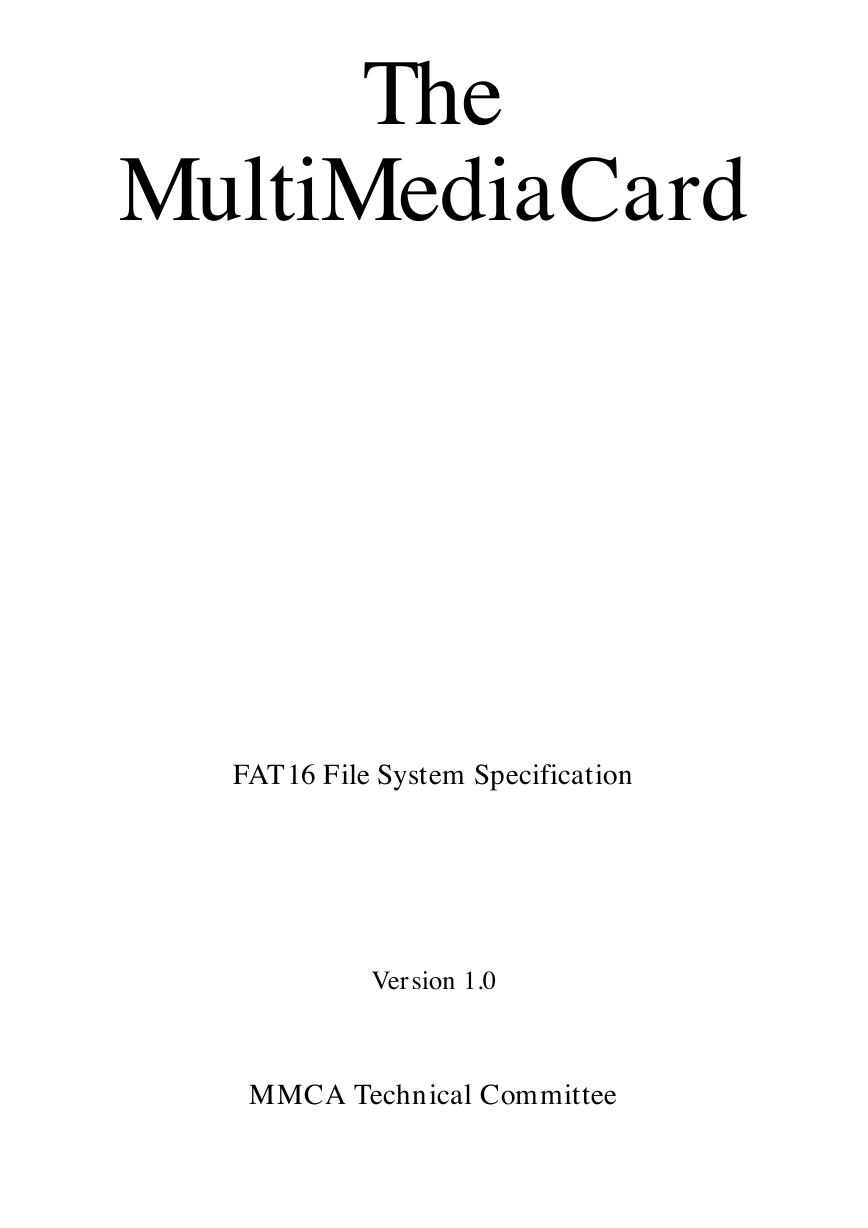

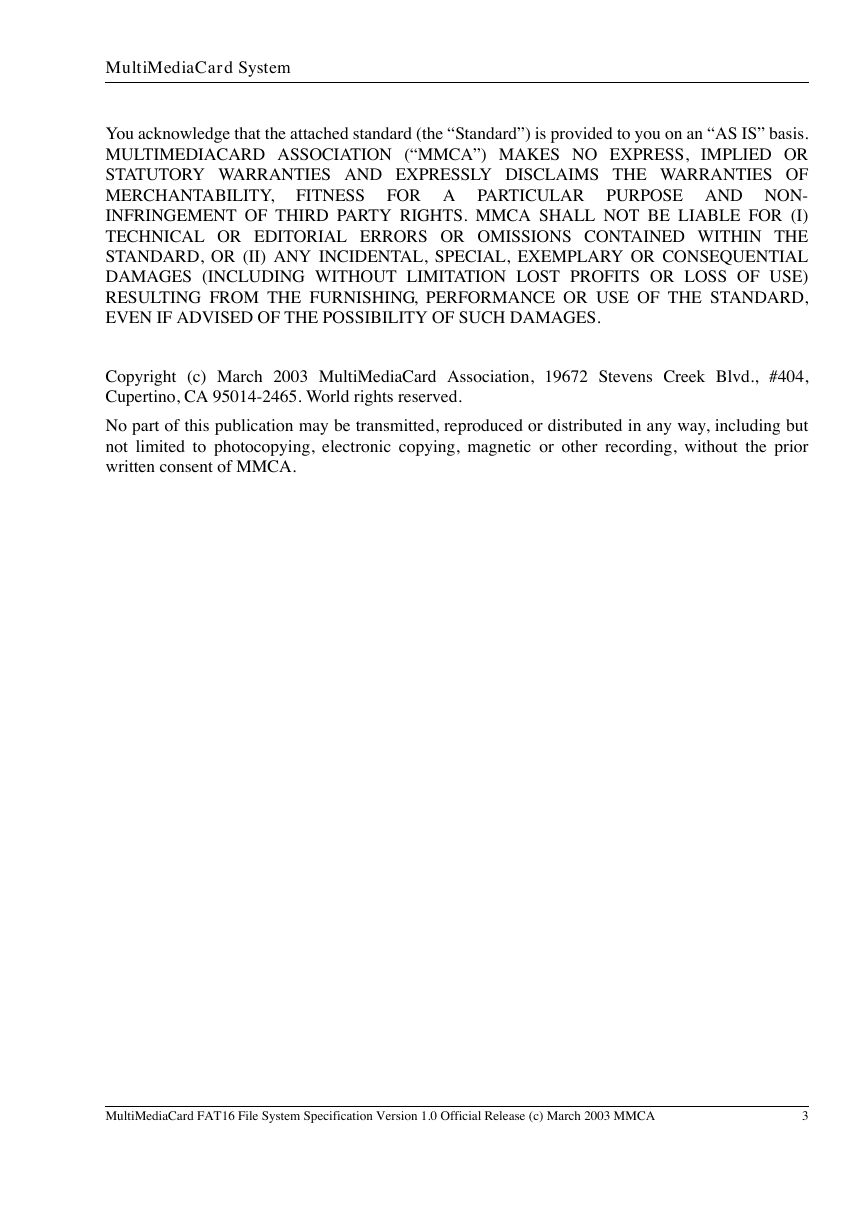
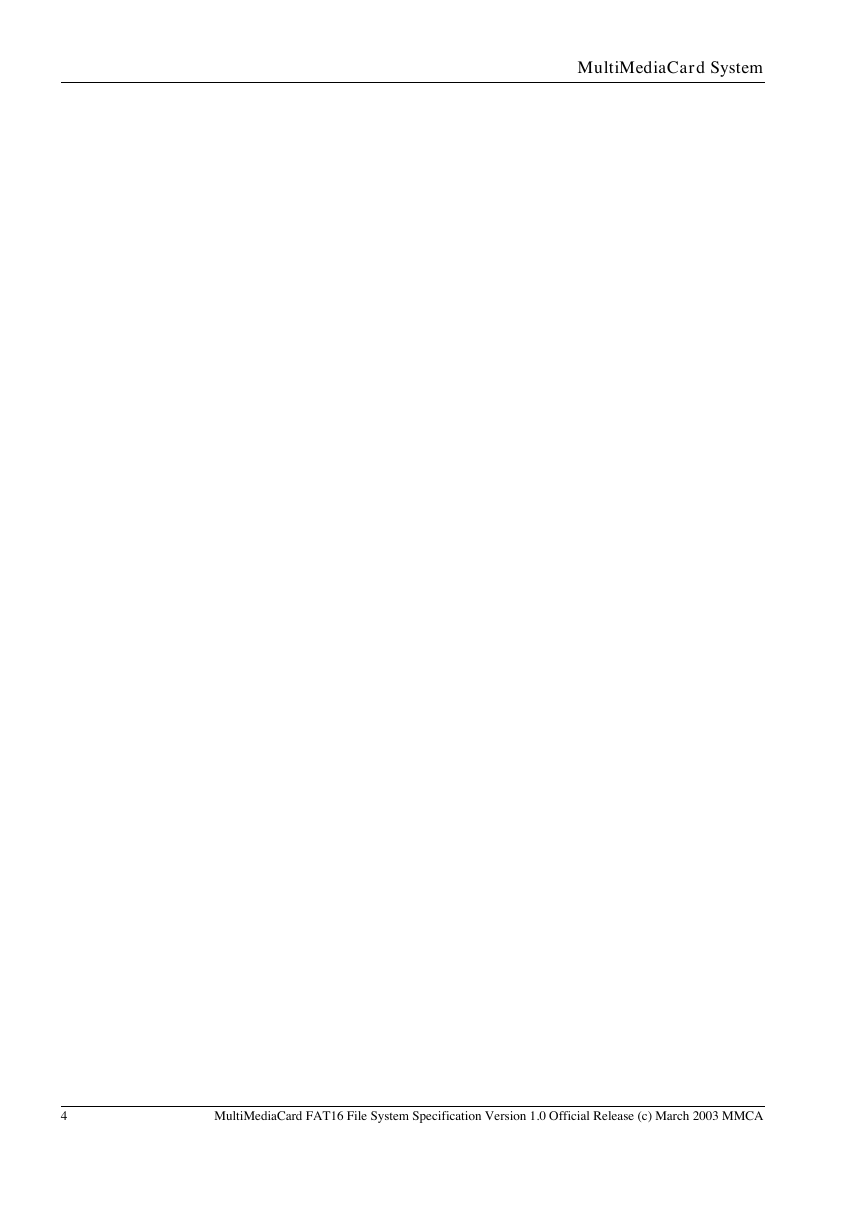
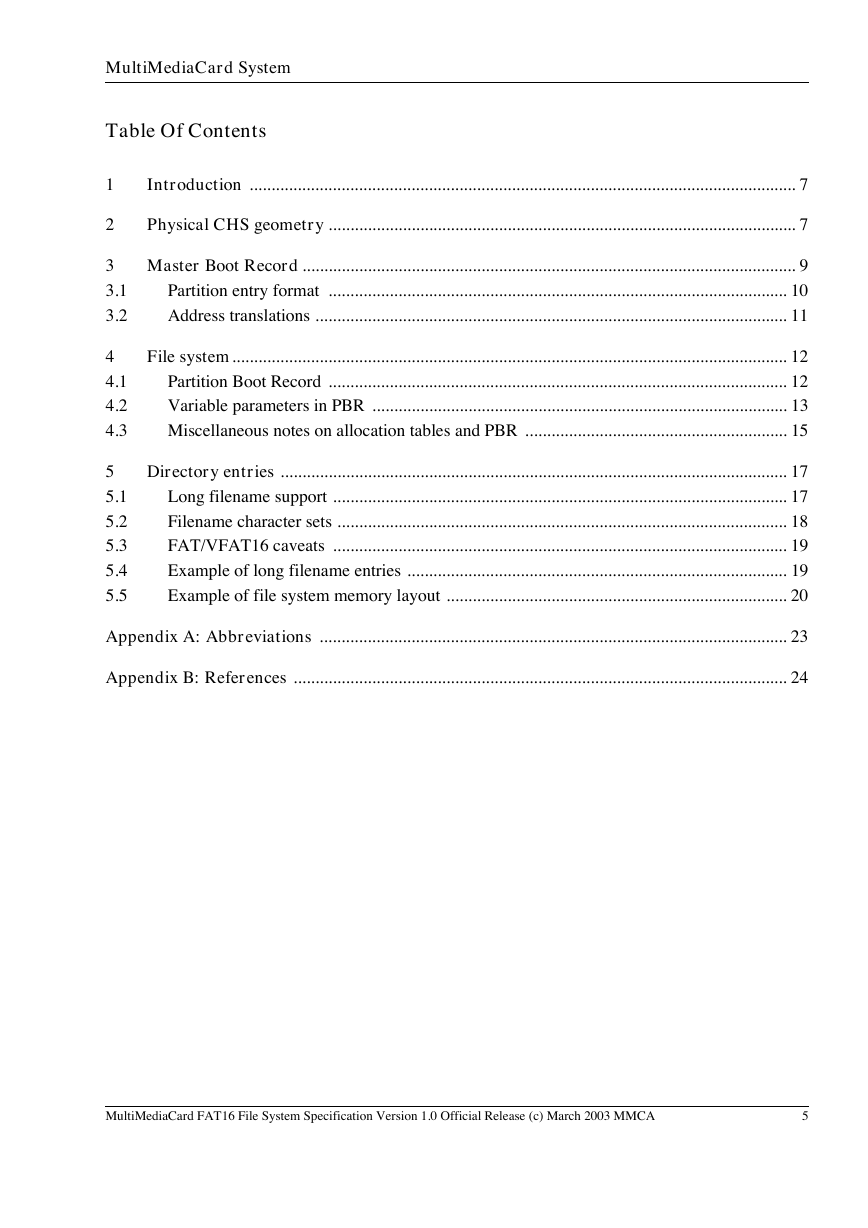
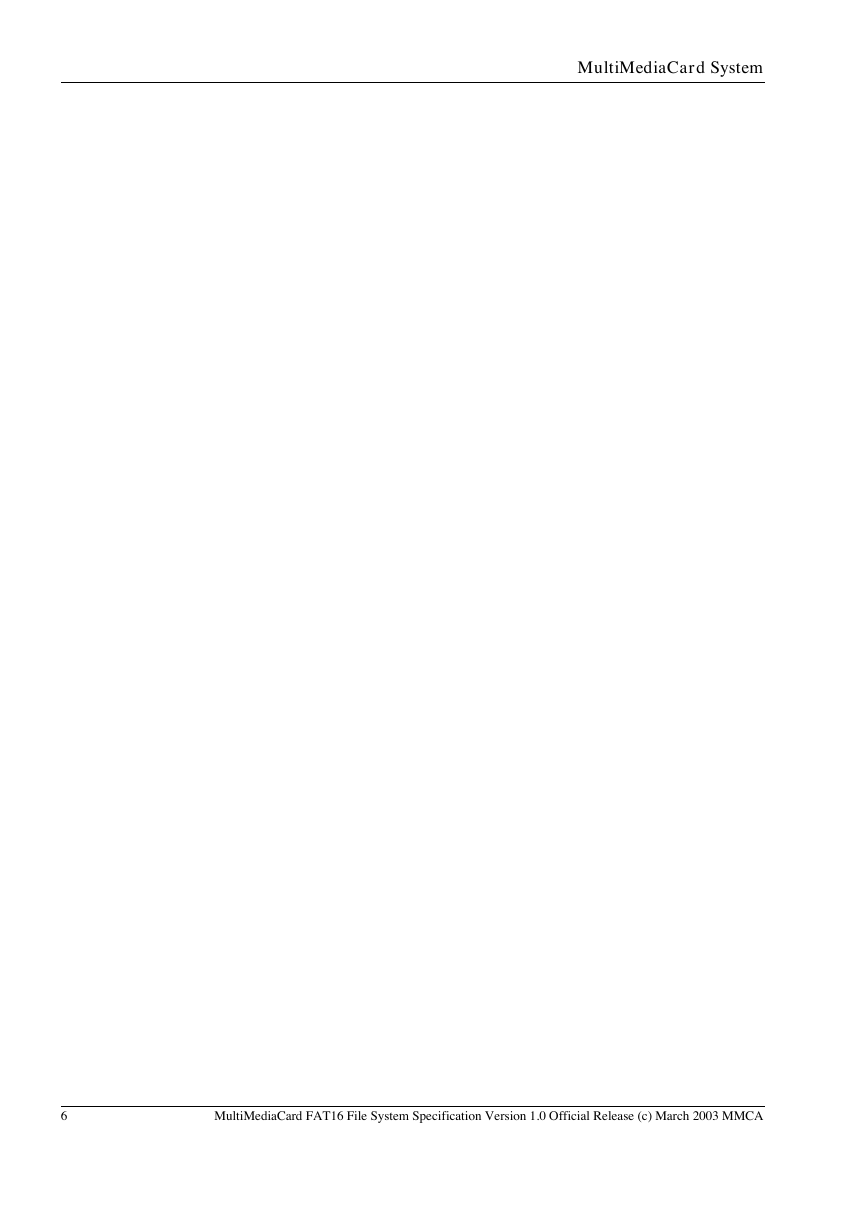
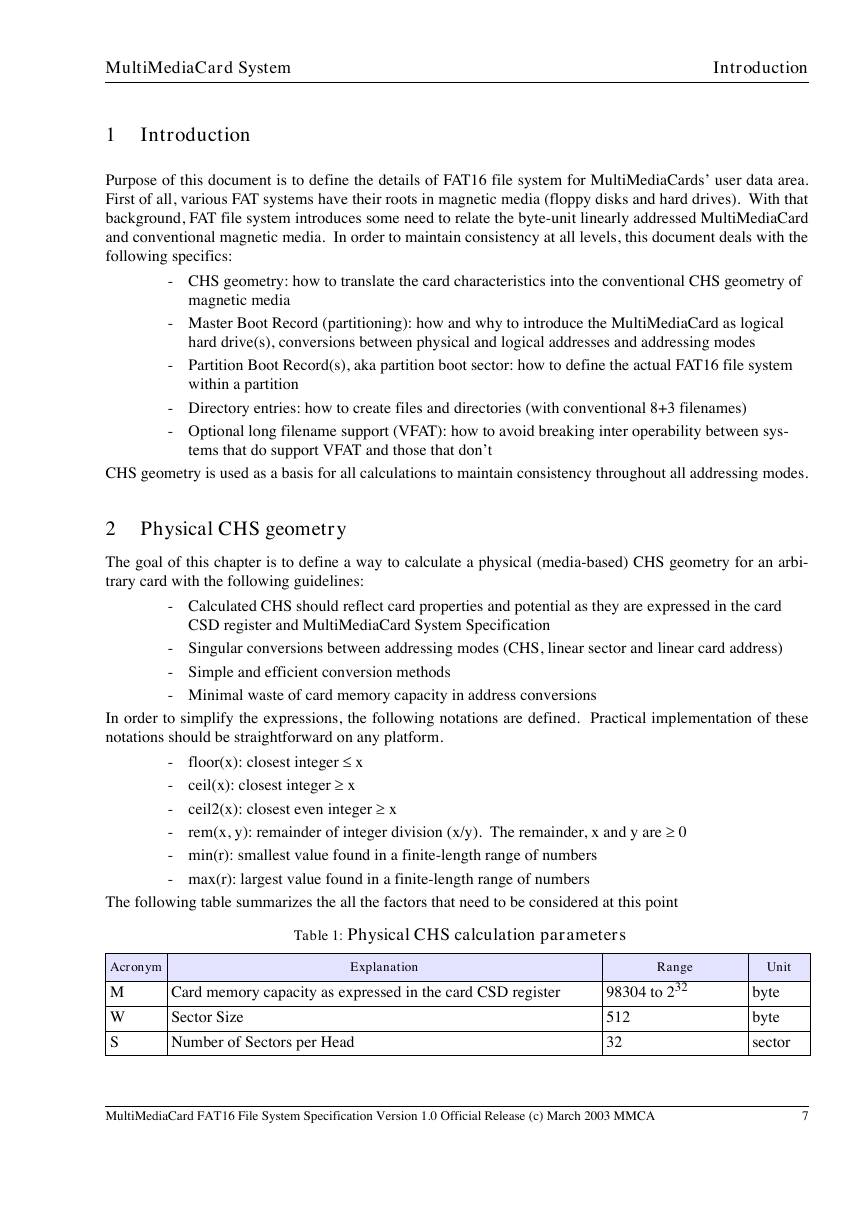
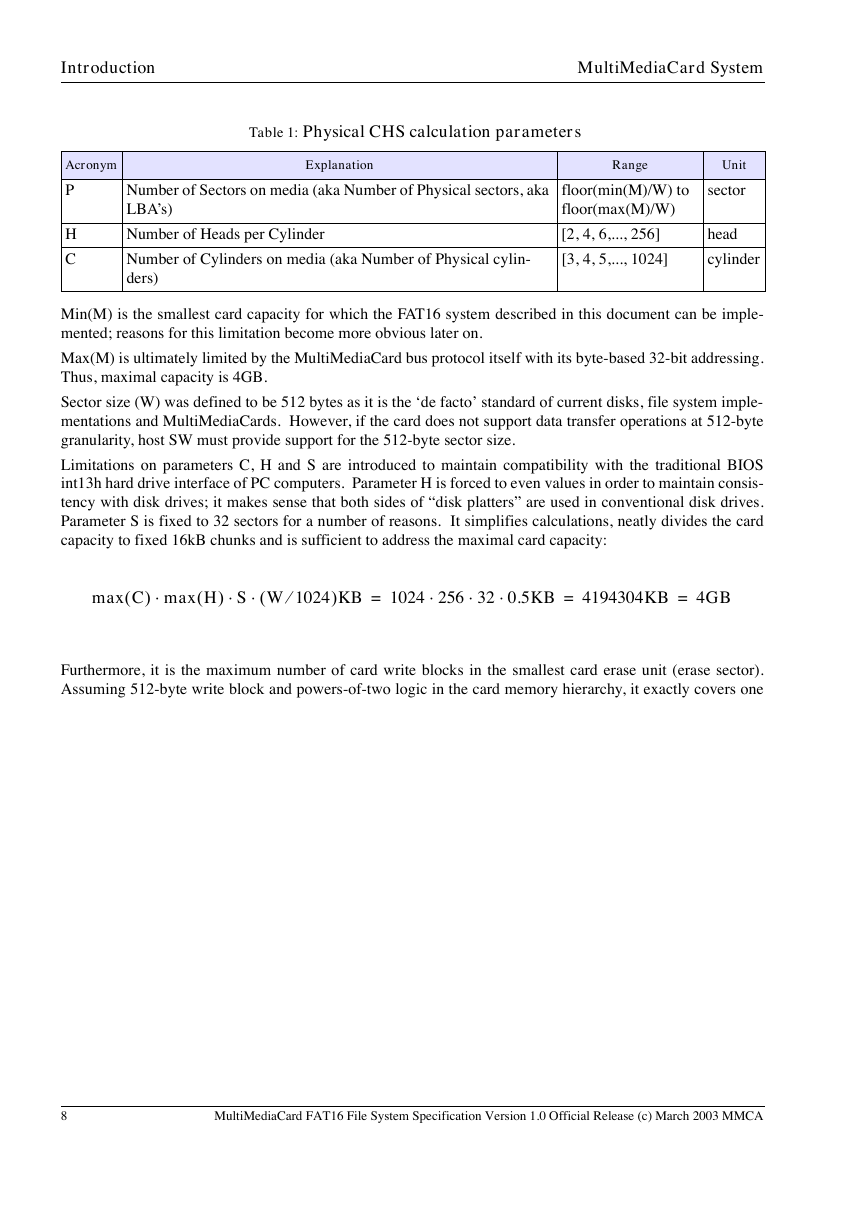








 uCOS-III的任务调度算法研究.pdf
uCOS-III的任务调度算法研究.pdf STM32F103x8B_DS_CH_V10(7STM32中文数据手册).pdf
STM32F103x8B_DS_CH_V10(7STM32中文数据手册).pdf FX2N系列PLC培训教程.pdf
FX2N系列PLC培训教程.pdf Modbus协议资料.pdf
Modbus协议资料.pdf WM8978中文资料(芯片资料).doc
WM8978中文资料(芯片资料).doc 5-1.【Codelab】HarmonyOS基于图像模块实现图库图片的四种常见操作.pdf
5-1.【Codelab】HarmonyOS基于图像模块实现图库图片的四种常见操作.pdf GX Developer 编程软件使用说明.pdf
GX Developer 编程软件使用说明.pdf MR-E伺服与FX3G接线图.pdf
MR-E伺服与FX3G接线图.pdf ATK-NEO-6M GPS模块常见问题汇总_201400721.pdf
ATK-NEO-6M GPS模块常见问题汇总_201400721.pdf STM32F407ZGT6(芯片资料).pdf
STM32F407ZGT6(芯片资料).pdf FM1715编程指南.pdf
FM1715编程指南.pdf Profibus教程-7.PROFIBUS-FMS.pdf
Profibus教程-7.PROFIBUS-FMS.pdf